If you’ve travelled through the northern parts of Pakistan, you’re probably aware of the hair-raising hairpin turns that dot the valleys and mountains there. From the Karakoram Highway to the Fairy Meadows, Shimshal, Gilgit, Kaghan, Shandur and Shounter valleys, there’s no place we haven’t combed to bring you this collection of the most dangerous roads of Pakistan.
Treacherous Tracks of Pakistan for Thrill Seekers
If you’re a thrill seeker looking for your next adrenaline rush, here are some of the most perilous roads in Pakistan that you can traverse in a 4×4.
- Karakoram Highway
- Fairy Meadows Track
- Shimshal Valley Road
- Jalkhad-Sharda Road
- Gilgit-Skardu Road
- Shounter Pass
- Babusar Pass
- Shandur Pass
We’ll elaborate a little on each of these routes below to give you an idea of why they have scored a spot on our list of the most dangerous roads of Pakistan.
Karakoram Highway

We start off with the Karakoram Highway or KKH, which is the highest paved road anywhere in the world. Built over a period of 27 years, from 1959 to 1986, on the path of the original Silk Route, the KKH claimed close to 900 lives during its construction. Most of these were Pakistani workers, while around 80 of them were Chinese. It is considered one of the scariest roads in the world, with a length of 1,300 kilometres. Heights, hairpin turns, and steep cliffs await you here.
Considering the route it takes, the KKH is also susceptible to bad weather, resulting in avalanches, landslides, and heavy snowfall, all of which can block the route for days. The part of the KKH leading to Khunjerab Pass is particularly challenging, having only enough space for a single jeep to pass through with a sheer drop at one end and a rough rock face on the other. The drive should definitely not be attempted by novice drivers, and the vehicle should be reasonably equipped to handle emergencies before traversing the route.
Fairy Meadows Track
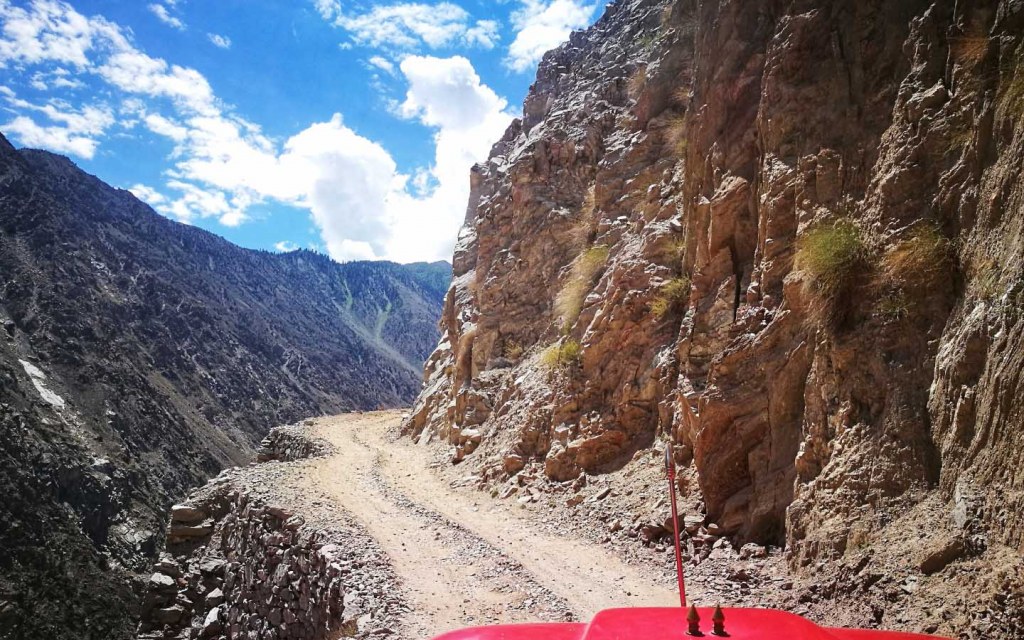
Beginning at Raikot Bridge on the Karakoram Highway, the 16.2-kilometre track leads all the way to the village of Tato, at the height of 3,300 metres (nearly 10,800 feet) above sea level. The road is unpaved, uneven, and risky, with a jeep crawling along at a cautious pace to avoid falling into the abyss below. The route is certainly not for the faint-hearted and is often listed as one of the scariest roads in the world. But it’s not the drive that’s the scary part, it’s the last two kilometres of the track, where the path becomes so narrow that no vehicle can pass through it.
You will have to dismount here and then hike to the top. The journey is of around 2 hours, but it can be the scariest two hours of your life, with one wrong step sending gravel tumbling down the cliff. You can make this part of the journey on horseback if trekking uphill is too much of a challenge. The region is closed off in the winters due to snowfall and avalanches, and the journey can only be made in the summer months of June and July. So, are you prepared to risk it all to witness beauty beyond compare?
Shimshal Valley Road
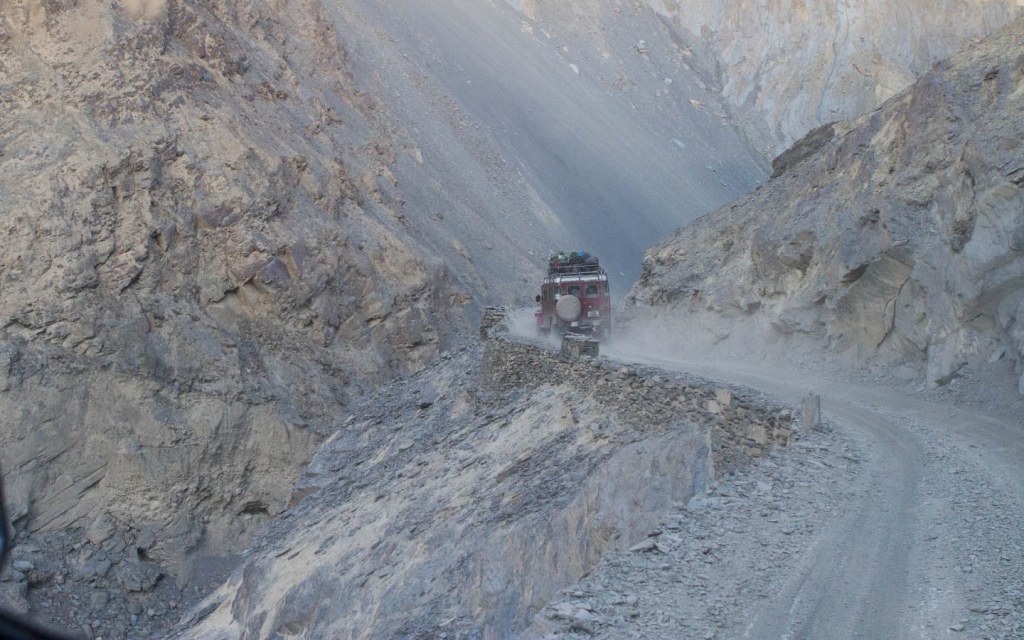
Shimshal is the highest settlement in Hunza Valley, with an altitude of 3,100 metres (10,200 feet approx.). The settlement was inaccessible by road until as recent as October 2003. This was when a road, which was under construction for 18 years, finally got completed and was then inaugurated. Before the route was built, residents of Shimshal had to undertake a 3-day journey over 3 mountain passes under extreme weather conditions to reach the nearest village of Passu (at the height of 2,485 metres or 8,150 feet approx.) and even now, it is one of the most perilous roads in Pakistan, and only experienced jeep drivers undertake the journey.
One vehicle usually leaves Shimshal every morning, taking all the passengers to Passu and returning again in the evening, but with no guard rails on the road and having to cross some scary wooden bridges and gorges just to get to another settlement, few want to traverse on the route regularly. The route is 56 kilometres long, but the permitted speed of the vehicle is around 10 kilometres per hour, so you should only experience this thrill if you’re willing to spend five hours on this dangerous path that even the locals fear.
Jalkhad-Sharda Road
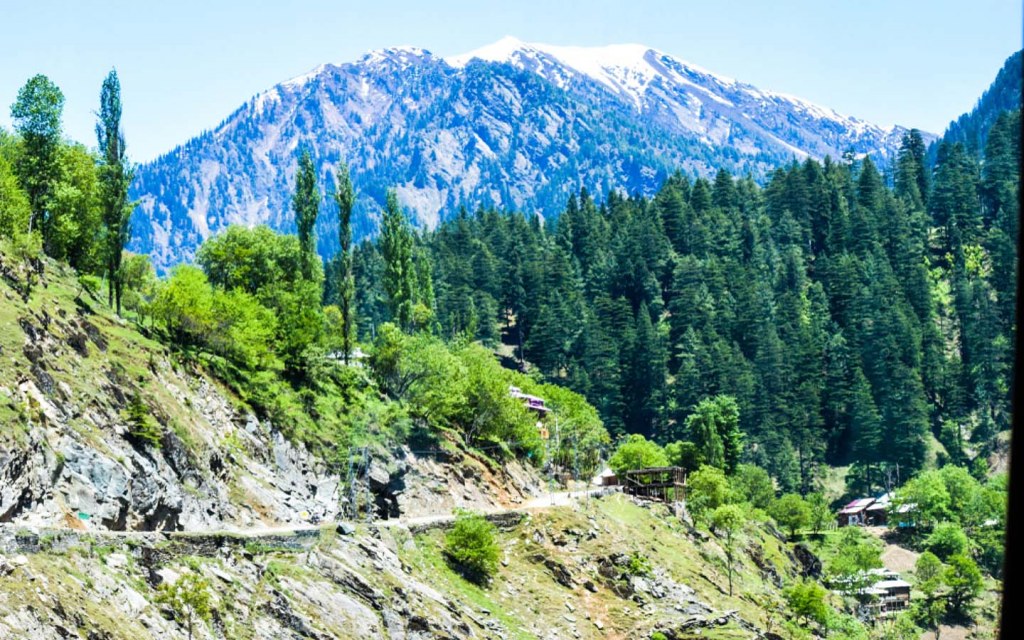
Linking Jalkhad in Naran Valley to Sharda in Kashmir Valley, the 48.7-kilometre long road rises up to an elevation of 3,960 metres (13,000 feet), reaching the mountain peak known as Noori Top. Built by the Pakistan Army in 1998 for use during the Kargil War, the route, which is among the most treacherous tracks of Pakistan, is now a tourist spot for adventure seekers.
The view along the way is fabulous, with the Naran Valley on one side and the Kargil Mountains and Kashmir on the other, but it’s only possible to enjoy the view if you ignore the sheer drops that run alongside the road at every hairpin turn. Weather constraints often result in a closure of the route for most of the year, so July to September is the best time to enjoy this thrilling and death-defying ride to the top. Make sure your 4×4 is driven by an experienced local as they know how to navigate these roads best.
Gilgit-Skardu Road

Known as Strategic Highway 1 or S-1, the route begins on the Karakoram Highway in Gilgit, ending after a distance of 167 kilometres in Skardu. The incline takes passengers from a height of 1,500 metres (4,900 feet) to 2,200 metres (7,300 feet) above sea level, running alongside the River Indus. Constructed in 1982 by the Pakistan Army engineers in association with engineers from China, the road was originally unpaved, with rough gravel and landslides making the journey difficult.
While sections of the road have now been paved, the journey is still 8 hours long, and rough weather can block the road for up to weeks at a time. The rocky, rugged, and barren mountains in the region also make the journey challenging for those who face carsickness or claustrophobia, as the route is generally open only in the summer months when the barren surroundings can result in an unbearable heatwave combined with the gradual incline of the route. For those who dare, the views are amazing with the road passing by several suspension bridges, quaint villages, and valleys.
Shounter Pass
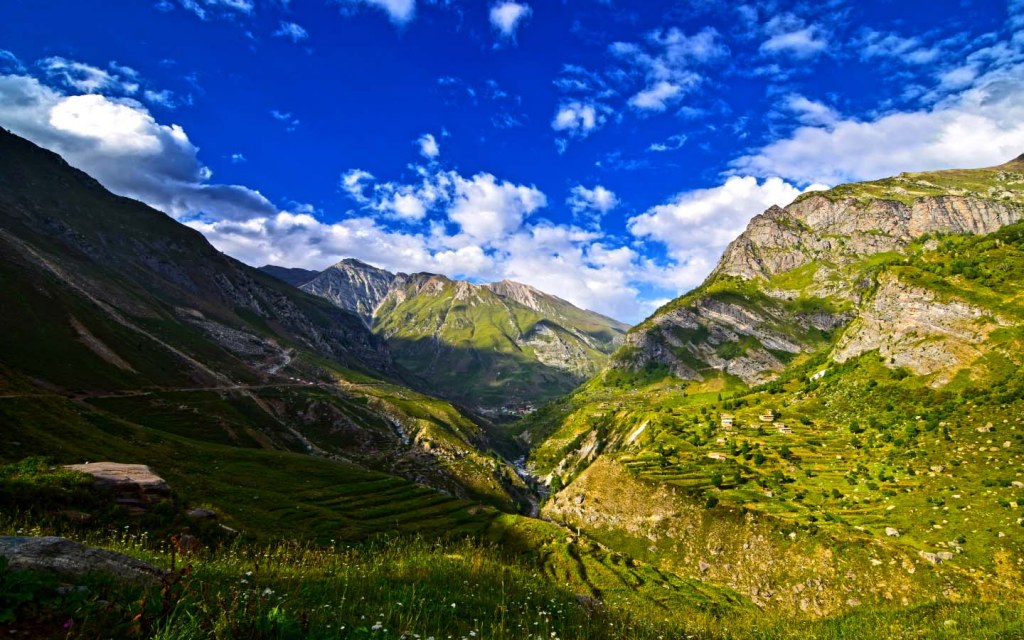
Another unpaved route among the most dangerous roads of Pakistan is the one leading to Shounter Valley. Commonly known as Shounter Pass, the route is located in Neelum Valley, Azad Kashmir, at an elevation of 4,400 metres (14,500 feet). Open for only a few months every year, the pass takes you from Kel in a jeep through the valley, where panoramic views, pine forests, and towering hills await you with the Neelum River keeping you company. Enthusiasts often drive on this daring route to reach Shounter Lake, which is half-way up the valley.
Babusar Pass

Chilas in Kaghan Valley connects to the Karakoram Highway via Babusar Pass, a road that was known for its slippery, sliding gravel that could shake nerves of steel. While the road has now been paved, it is still famous for its curvy bends and is generally open from July to September, after which, winter weather results in a closure of the route.
Although the incline takes you up to 4,200 metres (13,700 feet), it is the decline that is the challenge for even the most experienced of drivers, especially considering the unexpected weather conditions that the region is known for and the sheer drops at every turn.
Shandur Pass
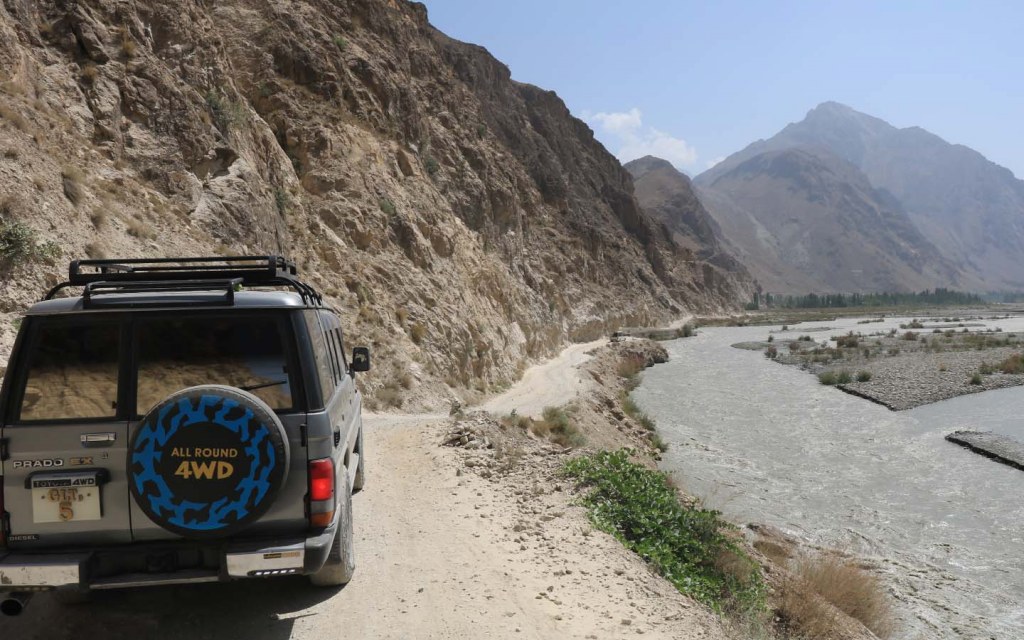
Have you heard about the Shandur Polo Festival that is held every year at the highest polo ground in the world? If you haven’t, let’s just say that you’re missing out on a real treat as traversing the route to the polo ground is an adrenaline-pumping journey in itself. The Shandur Pass lies at an elevation of 3,700 metres (12,200 feet) in Chitral Valley, with the jeep traversing across a steep unpaved incline to reach the flat plateau at the top where the sport is played.
Often called the ‘Roof of the World’, you can only reach Shandur via this route in May to October, and you’ll need to hold on to your seat because the cliffs on one side of the road will have you praying for your safe arrival at your destination.
These are some of the most dangerous roads of Pakistan, where thrill-seeking tourists can often be found daring it all for the experience. But for the locals, the routes are a part of their everyday lives, where they take life into their own hands to travel from one settlement to the other over unpaved and steep roads that genuinely deserve a place on our list.
You can also check out the most beautiful roads in Pakistan if you want a more scenic and relaxing adventure.
For more travel info, keep following Zameen Blog, Pakistan’s top tourism blog, where we bring you tourist guides for both local and international hotspots.



